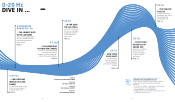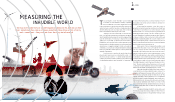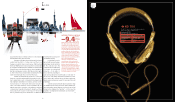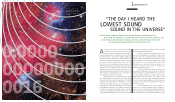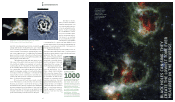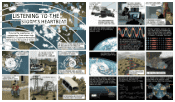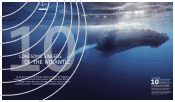Sennheiser 2011 Annual Report Download - page 13
Download and view the complete annual report
Please find page 13 of the 2011 Sennheiser annual report below. You can navigate through the pages in the report by either clicking on the pages listed below, or by using the keyword search tool below to find specific information within the annual report.
10 Hz
25
UNDERWATER HITS
WHALES GET AIR ON THE
SURFACE AND PUMP IT
FROM LARYNX TO LUNGS
OR VICE VERSA.
fin and sei whales. This summer,
he and his team will be traveling
from the Azores, a major inter-
section for whale traffic, to the
American East Coast and the
last of the North Atlantic white
whales, and then on to Iceland.
Laid back and easygoing, his
boyish looks seem out of place
for a doctor of marine biology.
But whether standing on the
deck of the “Song of the Whale”
with his binoculars in hand or
sitting in front of LCD monitors
where green, blue and red
curves flitter across the screen seemingly at random, his
meditative calm and patient determination never falter.
In contrast to his usual T-shirt or solid-colored hood-
ie, Boisseau sports state-of-the-art headgear: black
Sennheiser HD 280 Pro headphones. The headphones are as
indispensible to his work as are his computers and binocu-
lars. Not only do they offer uncompromising quality, spare
parts are available anywhere in the world and they are ex-
tremely robust. “The environment onboard a ship is abso-
lutely unforgiving. Sea water sloshes around, equipment
gets dropped or slammed against the walls,” says Boisseau.
Completing his equipment is a 400-meter (1,300 ft),
thumb’s-width cable fitted with two microphones, a depth
gauge and direction sensor, which is lowered into the water
1. The crew lowers the 400-meter-long cable into
the water. The hydrophone is attached to the end
of the cable. 2. The expeditions also serve to pro-
tect the endangered finback whales. 3. In summer
2012, Boisseau sailed to Iceland via the Azores and
the east coast of the USA.
and pulled behind the research ship. Though
these hydrophones – or as Boisseau calls them,
“my window into the underwater world” – have
been around for decades, they are still the best
technology around for localizing whale songs.
The “Song of the Whale” is a modern
21-meter (70-foot) boat that is powered by
both motor and sails and packed with scientific
instruments. Its hull is painted sea blue; its su-
perstructure and sails are brilliant white. Working onboard
in a mix of scientific research and animal preservation, Oli-
ver Boisseau and his team of marine biologists listen to the
whales and photograph the few less timid specimens, such
as the sperm whale.
Since sperm whales are uniquely identifiable by
their characteristic markings and scarring on head, body
and tail fin, their course can be tracked and each whale can
be positively identified. This helps them prove that whales
spotted off the mid-Atlantic islands of the Azores were re-
cently sighted off the coast of Norway. Once their migrato-
ry patterns have been established, the scientists put on
their animal-advocacy hats. The “Song of the Whale” is
headed for Iceland this summer to promote a ban on whal-
“Whale – there she blows!”
Whales are rarely as easy to
spot as this one shown here.



